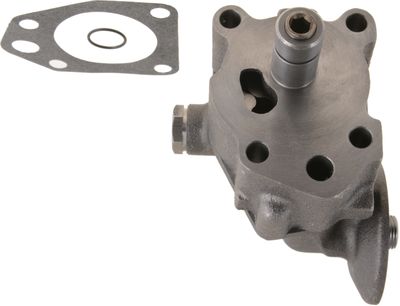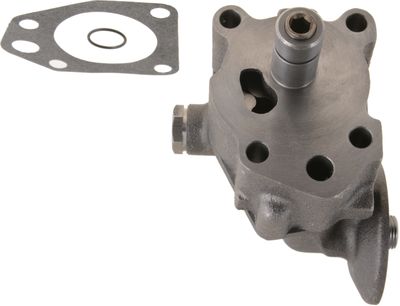Answer
Aug 20, 2024 - 07:53 AM
Testing your Sealed Power 224-4174V Engine Oil Pump is crucial to ensure it's functioning properly and maintaining adequate oil pressure in your engine. Here’s a step-by-step guide to help you test your engine oil pump:
1. Preparation- Gather Tools: You’ll need an oil pressure gauge kit, wrenches or socket set, Teflon tape (optional), and a service manual for your specific vehicle.
- Ensure Safety: Make sure the engine is cool before starting. If you need to access the oil pump directly, you may also need to lift the vehicle safely using a jack and jack stands.
- Low Oil Pressure Warning Light: If this light comes on, it could indicate low oil pressure, possibly due to a faulty oil pump.
- Engine Noise: Listen for unusual noises such as ticking or knocking, which can indicate poor oil circulation.
- Increased Engine Temperature: An overheated engine might be a sign that the oil pump isn’t working correctly, as oil helps in cooling engine components.
- Locate the Oil Pressure Sender Unit: This is typically found near the oil filter or on the engine block. Consult your vehicle’s service manual for the exact location.
- Remove the Oil Pressure Sender: Use a wrench to carefully remove the oil pressure sender unit. Be cautious not to damage the unit.
- Install the Oil Pressure Gauge: Attach the oil pressure gauge to the port where the oil pressure sender was located. Ensure a tight seal, possibly using Teflon tape on the threads.
- Start the Engine: With the gauge installed, start the engine and let it idle. Observe the oil pressure reading on the gauge. Refer to your vehicle’s manual for the correct pressure range; typically, it should be between 20-60 psi at idle when the engine is warm.
- Rev the Engine: Gently rev the engine while monitoring the oil pressure. The pressure should increase slightly with RPM.
- Remove the Oil Pan: If you need to directly inspect the oil pump, you’ll have to remove the oil pan. This step is more complex and involves draining the oil and removing several bolts to access the pump.
- Inspect the Oil Pump: Check the oil pump’s gears, housing, and pickup screen for wear, damage, or clogging.
- Check the Relief Valve: The oil pump has a relief valve that regulates oil pressure. Ensure it’s not stuck or malfunctioning.
- If the oil pressure readings are within the manufacturer’s specifications, the oil pump is likely functioning correctly.
- If the pressure is low, it could indicate a problem with the oil pump, oil passages, or another related issue.
- Abnormal noises or visual inspection revealing wear or damage may also indicate a failing oil pump.
- If everything checks out, reassemble any components you removed, replace the oil and oil filter if necessary, and perform another oil pressure test to confirm that everything is working correctly.
- If you find any issues or if the oil pump doesn’t seem to be performing correctly, it might be best to consult a professional mechanic for a more thorough diagnosis and potential replacement.
Testing your Sealed Power 224-4174V Engine Oil Pump is a critical task to ensure the longevity and reliability of your engine. If done properly, it can help you catch potential issues early before they lead to more severe engine damage.





Add New Comment